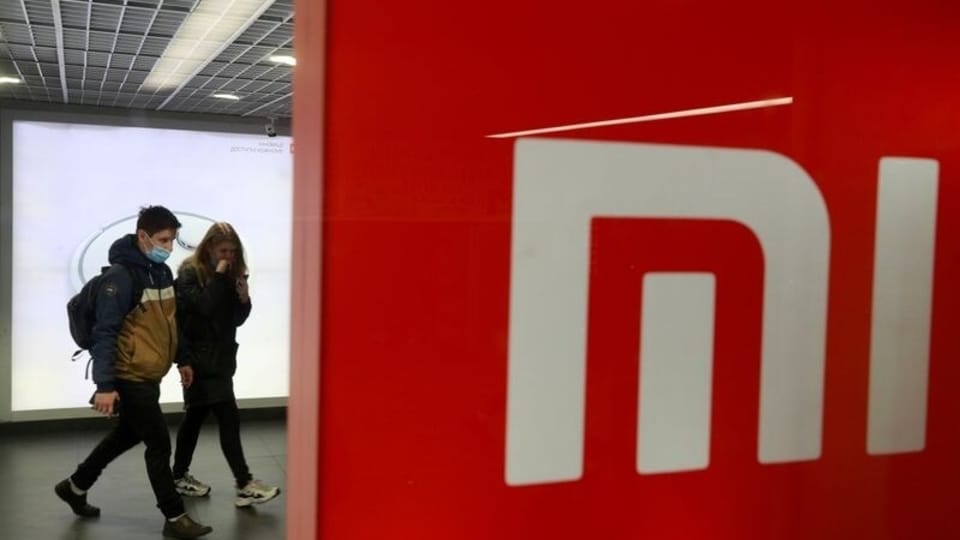Xiaomi posts a quarterly revenue of 6.1 million yuan
posted an adjusted net income of 6.1 billion yuan ($949 million) in the quarter ended in March, surpassing the highest estimate of 5.3 billion yuan.

Xiaomi Corp's quarterly profit beat estimates after the world's third-largest smartphone maker narrowed the gap with market leaders Samsung Electronics Co. and Apple Inc. in shipments.
The Beijing-based company posted an adjusted net income of 6.1 billion yuan ($949 million) in the quarter ended in March, surpassing the highest estimate of 5.3 billion yuan compiled by Bloomberg. Higher finance income and tax refunds contributed to the profit beat. Revenue jumped 55% to 76.9 billion yuan, also ahead of analyst estimates compiled by Bloomberg, according to a filing to the Hong Kong Stock Exchange Wednesday.
Billionaire co-founder Lei Jun is seeking new battlegrounds for the 11-year-old company that has already expanded from smartphones to a wide spectrum of consumer electronics, including smart TVs and laptops. The entrepreneur in March unveiled a $10 billion foray into carmaking, embarking on its biggest-ever overhaul.
“We managed to realize a very fast growth for in smartphone business with an increased gross profit,” President Wang Xiang said on a conference call. “That was helped by our strategy of realizing more higher-end products.”
On Wednesday, a U.S. court issued a final order that formally removes sanctions that could have blocked American investment in Xiaomi. The company had been accused of alleged links to China's military in the waning days of the Trump administration, though it disputed that charge and sued the U.S. government. The Defense Department has agreed that a final order vacating the designation “would be appropriate,” according to a May legal filing.
The court order marks a rare victory for China's technology giants caught in the crosshairs of the U.S. government, which had under former President Donald Trump targeted scores of Chinese tech companies over national security concerns. Huawei Technologies Co., once among Xiaomi's biggest rivals in smartphones, was cut off from its key suppliers as a result of a series of restrictions imposed by the U.S.
The lifting of the U.S. blacklisting means Xiaomi can now focus on growing its businesses, including in smartphones -- responsible for roughly 60% of company's revenue -- as well as nascent endeavors like smart cars. The company had shipped 48.6 million handsets worldwide in the first three months of the year, a 64.8% increase from a year ago and the fastest growth among the top five vendors, according to research firm International Data Corp.
Xiaomi grew its share of the premium market in China, which allowed the company to boost its average selling prices, the company said Wednesday. Despite potential competition from Honor, the smartphone brand spun off from Huawei, Xiaomi intends to stick with its existing strategy and expand offline channels to keep its sales momentum going, Wang said. But the company faces “tremendous challenges” in India -- where it holds a 28% share of the smartphone market -- because of the deadly coronavirus wave in the South Asian nation, he added.
Xiaomi remains among “the biggest beneficiaries from Huawei's smartphone retrenchment,” Bloomberg Intelligence analyst Matthew Kanterman wrote in a research note ahead of the earnings release.
Lei is also joining tech leaders from Apple Inc.'s Tim Cook to Huawei's Ren Zhengfei in the already crowded electric vehicles market. Calling it his last startup endeavor, he set up a stand-alone unit inside Xiaomi to focus on the development of next-generation EVs. It's said to mulling over a 1.5 billion yuan joint-investment in auto-driving chipmaker Black Sesame Tech as an attempt to broaden its reach in the sector. The company's car project remains in an early stage, Wang added.
EV sales could bring 18 billion yuan in sales for Xiaomi by 2030, a “modest opportunity” given the company's 2020 revenue was north of 245 billion yuan, according to Kanterman.
Those efforts may be hampered by a global semiconductor shortage that is affecting production in areas from video game consoles to automobiles. Chip lead times -- the gap between ordering a chip and taking delivery -- have climbed to the highest since 2017, forcing manufacturers to idle plants and fueling a shortage of key consumer goods.
While the shortages may not be resolved within this year, Xiaomi hasn't adjusted annual sales targets, Wang told reporters Wednesday.
“Chip shortage is seasonal and usually repeats every four years. This round of shortage may be worse than previous ones,” he said. “For Xiaomi, it's not a very serious issue because the resources we currently have are good enough to realize a nice growth. We will use this opportunity to improve our efficiency and utilize our business.”
Catch all the Latest Tech News, Mobile News, Laptop News, Gaming news, Wearables News , How To News, also keep up with us on Whatsapp channel,Twitter, Facebook, Google News, and Instagram. For our latest videos, subscribe to our YouTube channel.

























